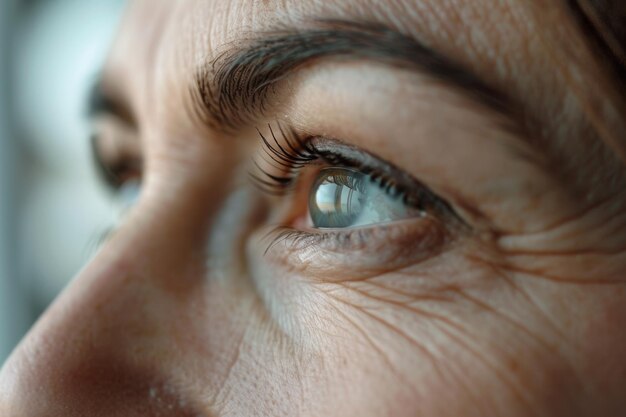Understanding Cataracts: How Long Do They Take to Develop?
Imagine seeing the world through a foggy window, where everything you look at is clouded by a blurry film. This is how many people describe their vision once cataracts begin to form. Cataracts are a part of the natural aging process and a common eye condition that develops over time. So, how long do cataracts take to develop, and what can you do about them? Let's dive into this comprehensive guide to understand the timeline and factors involved in the development of cataracts.
🌟 What Are Cataracts?
Cataracts are a condition where the lens of the eye becomes progressively opaque, leading to blurred vision. Most cataracts are related to aging and are prevalent in older adults. The lens of your eye, which is normally clear, helps to focus light or an image on the retina. In an eye with cataracts, less light reaches the retina, and vision becomes duller and blurred.
Types of Cataracts
- Nuclear Cataracts: These form in the center of the lens and are most commonly associated with aging.
- Cortical Cataracts: These start at the outer edge of the lens and slowly extend towards the center.
- Posterior Subcapsular Cataracts: These affect the back of the lens and can develop faster, often found in individuals taking high doses of steroids or with other health conditions.
⏱️ Timeline: How Long Do Cataracts Take to Develop?
Cataracts do not form overnight. The process can take years, and the progression varies from person to person. Most cataracts associated with aging develop gradually over decades.
Key Factors Influencing Cataract Development
- Age: As you age, the proteins in the lens of your eye begin to break down and clump together.
- Sun Exposure: Prolonged exposure to UV rays can accelerate the development of cataracts.
- Medical Conditions: Diabetes and high blood pressure can increase the risk of developing cataracts earlier.
- Lifestyle: Smoking, alcohol consumption, and poor diet can also contribute to cataract formation.
- Medications: Long-term use of certain medications like steroids can hasten cataract development.
Individual Variability
The rate of cataract progression is not uniform and can differ widely among individuals. Some people may notice changes in their vision within a few years, while others may not for decades.
🔍 Signs to Look Out For
While cataracts develop slowly, being vigilant about your eye health is crucial. Here are some common symptoms that might indicate the onset of cataracts:
- Blurry Vision: The most common symptom; it's like looking through a foggy window.
- Sensitivity to Light: Bright lights may seem harsh, and you may notice increased glare.
- Night Vision Difficulties: Driving at night becomes challenging due to halos around lights.
- Color Fading: Colors may seem less vibrant.
🏥 When to See an Eye Care Professional
Regular eye exams are key to early detection and management of cataracts. Here are some scenarios that warrant a visit to an eye care professional:
- Regular Check-ups: For individuals over 60, annual eye exams are recommended.
- Persistent Symptoms: If you experience the symptoms listed above consistently, it's time to seek professional advice.
- Vision Changes: Sudden changes in vision should be addressed immediately.
👩⚕️ Managing Cataracts: What Are Your Options?
Monitoring and Adjustments
For those in the early stages, simple adjustments in lifestyle and eyewear might be sufficient. This includes using anti-glare sunglasses, brighter lighting, or magnifying lenses for reading.
Cataract Surgery
When cataracts interfere significantly with daily activities, surgery can be considered. Cataract surgery is one of the most common and successful medical procedures performed today. It involves removing the cloudy lens and replacing it with a clear artificial one.
Important Considerations Before Surgery:
- Discussion with an Eye Care Specialist: Understand the procedure, risks, and benefits.
- Lifestyle Impact: Consider how cataracts affect your quality of life.
- Post-surgery Care: Be prepared for follow-up appointments and care.
🧠 Maintaining Eye Health: Prevention and Care Tips
While cataracts are mostly unavoidable as you age, certain lifestyle changes can help maintain eye health and slow down their progression.
Tips for Healthy Eyes
- Wear Sunglasses: Protect your eyes from harmful UV light.
- Quit Smoking: Smoking doubles the risk of cataract formation.
- Healthy Diet: Consume foods rich in antioxidants like leafy greens, fruits, and fish.
- Regular Eye Exams: Stay proactive about eye health with yearly check-ups.
The Benefits of Good Eye Care
- Vision Clarity: Keeping your eyes healthy can help you maintain clear vision for longer.
- Early Detection: Regular exams can catch cataracts and other eye issues before they affect vision significantly.
- Overall Health: Eye health is linked to your overall well-being, so taking care of your eyes can contribute to better health.
📋 Quick Summary: Cataract Development and Management Guide
Here's a concise overview to keep handy:
- Cataracts develop slowly over many years and vary individually.
- Lifestyle and medical factors can influence cataract progression.
- Key symptoms include blurred vision, sensitivity to light, and night vision difficulties.
- Early evaluation from an eye care professional is crucial for management.
- Lifestyle changes and regular eye exams can slow down cataract development.
- Cataract surgery is an option when vision impairment affects daily life.
🗝️ Key Takeaway
Cataracts are a common aspect of aging but understanding their development and progression can empower you to make informed decisions about eye health. Regular eye exams, healthy lifestyle choices, and timely professional advice are your best defenses against the potentially disruptive effects of cataracts.
While cataracts can cloud vision, being equipped with the right knowledge ensures that you're never in the dark about your eye health. Remember, it's all about seeing the bigger picture when it comes to taking proactive steps for your eyes. 🌞👁️🗨️
